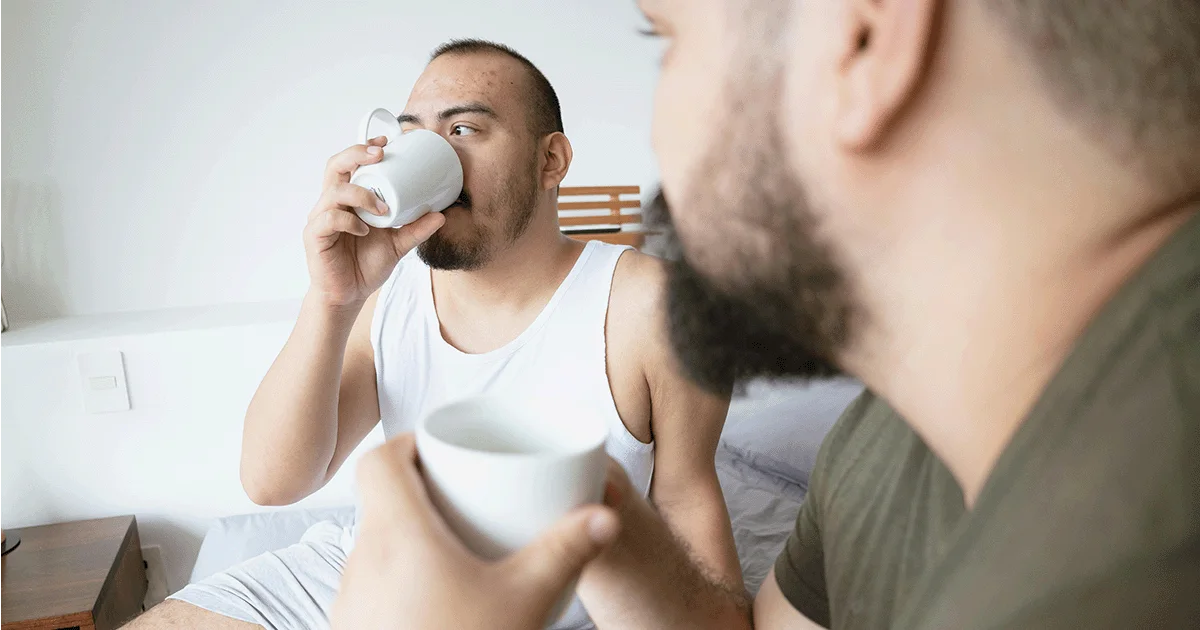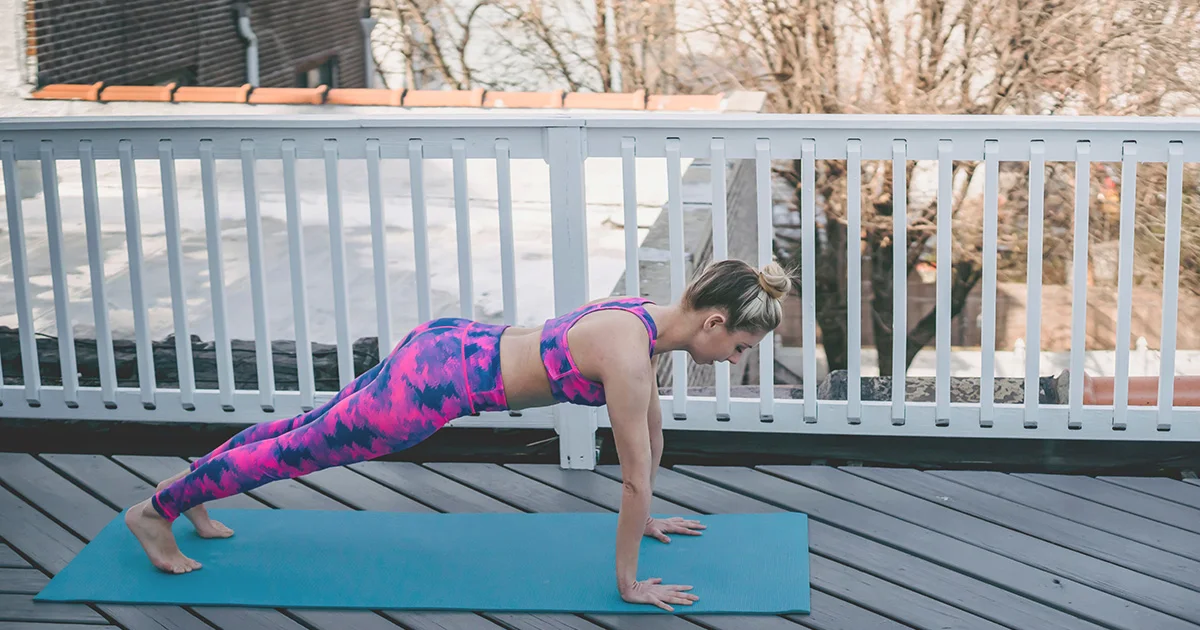Here's what we'll cover
Here's what we'll cover
Here's what we'll cover
For people with overweight and obesity, losing weight is an accomplishment that comes with many health benefits. However, for some people, the journey doesn’t end there. Loose skin after significant weight loss may affect body image and self-confidence, and many people look for strategies to tighten and firm their skin. So, if you want to say goodbye to loose skin and embrace your new body, read on to learn more about how to tighten loose skin.
What causes loose skin after weight loss?
The skin changes after weight loss are not fully understood, but a commonly cited cause is the loss of elasticity or skin stretchiness. When a person gains weight, the skin has to stretch to accommodate increased fat deposits. If skin stretches too much for a long enough time, damage can occur to collagen and elastin fibers. Collagen and elastin fibers make up the structural backbones of your skin and help give it strength and elasticity.
When we lose weight, the skin damage may not allow it to bounce back as quickly as the underlying fat tissue, leading to loose skin. Excess skin is commonly found in the abdomen, upper arms, breast/chest, thighs, and buttocks. In addition, collagen and elastin fiber damage can manifest as visible stretch marks, affecting over 40% of people with obesity.
But you can also see stretch marks with weight loss, especially if you lose a lot of weight or drop the pounds quickly. The skin may not have enough time (or capacity) to regain its elasticity and ability to bounce back, leading to loose skin. Other signs of skin damage may not be as obvious. Some data suggests that skin may be weaker after losing a massive amount of weight due to thinning and damage to collagen & elastin fibers.
Factors that influence loose skin
Gaining or losing weight are not the only things that can affect elasticity. Age is another contributing factor. As we age, the production of collagen and elastin fibers naturally decreases, causing loose skin.
Several other factors affect whether or not you may develop loose skin, including:
Amount of weight lost: the more weight you lose, the more likely you are to develop loose skin.
Duration of weight gain: the longer skin stays over-stretched, the more likely you are to have damage to collagen and elastin fibers
Speed of weight loss: rapid weight loss, like that seen in crash diets or weight loss surgery, may affect the quality of your skin
Overall skin health: factors like sun damage, smoking, and poor nutrition can affect your skin’s health and decrease skin elasticity, making loose skin more obvious
Genetics: if other family members tend to have loose skin, then you are more likely to have it too!
Loose skin isn’t just a visible change; there are real health risks associated with loose skin after weight loss. Having too much loose skin can lead to both psychological and physical problems.
Redundant skin can negatively impact body image, self-confidence, and psychological well-being. Some people may feel reluctant to participate in social activities or intimacy due to self-consciousness. Studies suggest that approximately 90% of people who have undergone weight loss surgery are unhappy with the appearance of loose skin. Interestingly, even if the amount of excess skin doesn’t change with weight loss, people seem to be more aware of and disturbed by the extra skin after weight loss.
This redundant skin may also cause physical discomfort, like back pain from the weight of the skin. Others may experience irritation, chafing, sores, or bad odors in certain areas. Some people find that sweating during exercise or wearing certain clothing makes them more uncomfortable. The excess skin may even prevent people from being physically active. For example, loose skin can get in the way when bending over, riding a bicycle, or prevent you from running or walking quickly.
Lastly, skin folds caused by loose skin can lead to fungal infections, eczema, rash (called intertrigo), and bacterial skin infections.
Natural remedies to tighten loose skin
While natural remedies won’t get rid of loose skin, they may help improve skin appearance, especially in people who have lost small to moderate amounts of weight. These skin tightening treatments are less likely to be effective in people with loose skin after massive weight loss.
Strength training
Building muscle mass may help fill some areas with skin folds and decrease that saggy skin look. Resistance or strength training is one of the most effective ways to increase your muscle mass. But remember, building muscle adds weight, so don’t be concerned if your numbers on the scale go up a bit—your goal is to add lean muscle, not fat. And by adding physical activity to your daily regimen, you are helping to maintain that weight loss that you worked so hard to achieve.
Hydration
Improving your overall hydration may help your skin look more plump and healthy. You can do this by drinking water and eating water-rich fruits and vegetables. You can also improve hydration in your skin directly by applying moisturizer creams. Moisturizers often contain hydrating compounds, like glycerin, glycolic acid, and hyaluronic acid to help draw moisture into your skin.
Collagen supplements
Taking collagen supplements may promote collagen synthesis, potentially replacing some of the collagen you have lost and help strengthen your skin. Some studies suggest that taking collagen may also improve your skin's hydration and elasticity. You may see more of an effect if you take it with vitamin C, an essential nutrient for collagen production. And if you don’t want to take supplements, many people turn to bone broth as a good source of collagen. Either way, it is unclear whether these benefits apply to people who struggle with loose skin after weight loss since it hasn’t been tested in this group. More research is needed.
Skin-firming creams
Skin-firming creams often contain retinoids, like retinol or retinoic acid, along with collagen and elastin. These products may also help with the appearance of loose skin. However, while they can help improve the appearance of fine lines and wrinkles, they are not likely to be as effective at tightening excess skin.
Medical treatments to tighten loose skin
Medical treatments may provide a more noticeable improvement in the extra skin for people with significant amounts of loose skin after weight loss.
Body contouring surgery
Plastic surgery, or body contouring, is one of the most effective ways to tighten loose skin after significant weight loss, especially after bariatric surgery. Bariatric surgery, or weight loss surgery, involves surgically changing your stomach size or the way you digest food to promote weight loss. People can lose approximately 30% of their baseline body weight within the first year after surgery. As you can imagine, losing that much weight often leads to excess loose skin in around 96% of people after bariatric surgery. That’s where plastic surgery can help.
Body-contouring surgery is a type of plastic surgery that involves the removal of excess skin and fat. Each specific type of body-contouring surgery is named after the area of the body being addressed, including:
Tummy tuck (abdominoplasty): excess skin and fat is removed from the abdominal area and abdominal muscles are tightened if needed
Panniculectomy: removes the pannus or extra skin and tissue from the lower abdomen
Circumferential body lift (belt lipectomy): removes a belt of extra skin and fat from the abdomen, waist, and buttock areas
Arm lifts (brachioplasty): removes skin from the upper arms
Breast lift/reduction (mammoplasty): removes skin, fat, and breast tissue to reshape the area
Thigh lift: removes skin and fat from the inner and outer thighs
Body contouring with plastic surgery is the most common method of removing excess skin after significant weight loss, but it is associated with risks and side effects. Many of these surgeries may require inpatient hospital stays and carry with them the potential for pain, infections, scarring, and repeat procedures.
Non-surgical treatments
If surgery is not for you, there are noninvasive options for tightening loose skin which offer less dramatic improvements than plastic surgery.
Ultrasound treatments have been shown to tighten skin, especially around the face and neck. Ultrasound waves penetrate the skin and stimulate new collagen synthesis, thereby improving the strength and elasticity of the skin. However, this may not be effective in people with significant amounts of extra skin.
Radiofrequency is another non-invasive option to skin tightening. This type of procedure uses heat to trigger collagen production in the deep skin layers. While studies have not been done in people with significant amounts of excess skin, radiofrequency may improve the skin laxity associated with aging.
Loose skin after weight loss is a common concern for people who have lost a significant amount of weight. Natural remedies, such as exercise and proper hydration can help improve skin appearance and elasticity, but won’t get rid of excess skin after significant weight loss. Medical treatments, including non-surgical procedures and surgical interventions, may give you more dramatic results. Each person’s situation is unique, so consider personalized advice and guidance from your healthcare provider to address loose skin and enhance your overall well-being.
DISCLAIMER
If you have any medical questions or concerns, please talk to your healthcare provider. The articles on Health Guide are underpinned by peer-reviewed research and information drawn from medical societies and governmental agencies. However, they are not a substitute for professional medical advice, diagnosis, or treatment.
References
Alam, M., White, L. E., Martin, N., et al. (2019). Ultrasound tightening of facial and neck skin: A rater-blinded prospective cohort study. Journal of the American Academy of Dermatology, 81(2), 387-394. doi:10.1016/j.jaad.2019.02.044. Retrieved from https://www.sciencedirect.com/science/article/abs/pii/S0190962209007245
Araújo, A. R., Soares, V. P., Silva, F. S.,et al. (2015). Radiofrequency for the treatment of skin laxity: mith or truth. Anais Brasileiros de Dermatologia, 90(5), 707–721. doi:10.1590/abd1806-4841.20153605. Retrieved from https://pubmed.ncbi.nlm.nih.gov/26560216/
Biörserud, C., Olbers, T., Staalesen, T., et al. (2016). Understanding excess skin in postbariatric patients: objective measurements and subjective experiences. Surgery for Obesity and Related Diseases, 12(7), 1410–1417. doi:10.1016/j.soard.2016.01.033. Retrieved from https://pubmed.ncbi.nlm.nih.gov/27178615/
Bjerså, K., Biörserud, C., & Fagevik Olsén, M. (2015). Therapeutic ultrasound treatment for excessive skin on the upper arms due to extensive weight loss after bariatric surgery: A single blind, randomised, controlled trial. Journal of Plastic Surgery and Hand Surgery, 49(6), 353–357. doi:10.3109/2000656X.2015.1058270. Retrieved from https://pubmed.ncbi.nlm.nih.gov/26155952/
Bolke, L., Schlippe, G., Gerß, J., et al. (2019). A collagen supplement improves skin hydration, elasticity, roughness, and density: results of a randomized, placebo-controlled, blind study. Nutrients, 11(10), 2494. doi:10.3390/nu11102494. Retrieved from https://www.ncbi.nlm.nih.gov/pmc/articles/PMC6835901/
Centers for Disease Control and Prevention (CDC). Physical Activity for a Healthy Weight. Retrieved on May 25, 2023 from https://www.cdc.gov/healthyweight/physical_activity/index.html
Fagevik Olsén, M., Gren, S., Heydeck Sundberg, S., et al. (2022). Physical activity with hindrances: a qualitative study of post bariatric patients' experiences of physical activity in relation to excess skin. Journal of Plastic Surgery and Hand Surgery, 56(6), 320–325. doi:10.1080/2000656X.2020.1777144. Retrieved from https://pubmed.ncbi.nlm.nih.gov/32538228/
Kalra, M. G., Higgins, K. E., & Kinney, B. S. (2014). Intertrigo and secondary skin infections. American Family Physician, 89(7), 569–573. Retrieved from https://www.aafp.org/pubs/afp/issues/2014/0401/p569.html
Marek, R. J., Steffen, K. J., Flum, D. R., et al. (2018) Psychosocial functioning and quality of life in patients with loose redundant skin 4 to 5 years after bariatric surgery. Surgery for Obesity and Related Diseases, 14(11), 1740-1747. doi:10.1016/j.soard.2018.07.025. Retreived from https://pubmed.ncbi.nlm.nih.gov/30195657/
Mazzoni, D., Lin, M. J., Dubin, D. P., et al. (2019). Review of non-invasive body contouring devices for fat reduction, skin tightening and muscle definition. The Australasian Journal of Dermatology, 60(4), 278–283. doi:10.1111/ajd.13090. Retrieved from https://pubmed.ncbi.nlm.nih.gov/31168833/
Oakley, A. M. & Patel, B. C. (2022). Stretch marks. StatPearls. Retrieved from https://pubmed.ncbi.nlm.nih.gov/28613776/
Palma, L., Marques, L. T., Bujan, J., et al. (2015). Dietary water affects human skin hydration and biomechanics. Clinical, Cosmetic and Investigational Dermatology, 8, 413–421. doi:10.2147/CCID.S86822. Retrieved from https://www.ncbi.nlm.nih.gov/pmc/articles/PMC4529263/
Pullar, J. M., Carr, A. C., & Vissers, M. C. M. (2017). The roles of vitamin C in skin health. Nutrients, 9(8), 866. doi:10.3390/nu9080866. Retrieved from https://www.ncbi.nlm.nih.gov/pmc/articles/PMC5579659/
Rosen, J., Darwin, E., Tuchayi, S. M., et al. (2019). Skin changes and manifestations associated with the treatment of obesity. Journal of the American Academy of Dermatology, 81(5), 1059–1069. doi:10.1016/j.jaad.2018.10.081. Retrieved from https://pubmed.ncbi.nlm.nih.gov/31610858/
Sadeghi, P., Duarte-Bateman, D., Ma, W., et al. (2022). Post-bariatric plastic surgery: abdominoplasty, the state of the art in body contouring. Journal of Clinical Medicine, 11(15), 4315. doi:10.3390/jcm11154315. Retrieved from https://www.ncbi.nlm.nih.gov/pmc/articles/PMC9330885
Sami, K., Elshahat, A., Moussa, M., et al. (2015). Image analyzer study of the skin in patients with morbid obesity and massive weight loss. Eplasty, 15, e4. Retrieved from https://pubmed.ncbi.nlm.nih.gov/25671051/
Sethi, A., Kaur, T., Malhotra, S. K., et al. (2016). Moisturizers: the slippery road. Indian Journal of Dermatology, 61(3), 279–287. doi:10.4103/0019-5154.182427. Retrieved from https://www.ncbi.nlm.nih.gov/pmc/articles/PMC4885180/
Zhang, S. & Duan, E. (2018). Fighting against skin aging: the way from bench to bedside. Cell Transplantation, 27(5), 729–738. doi:10.1177/0963689717725755. Retrieved from https://pubmed.ncbi.nlm.nih.gov/29692196/











